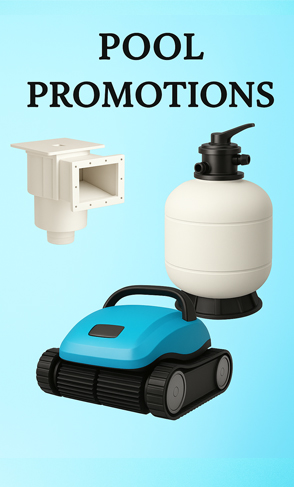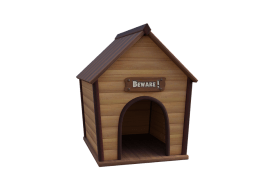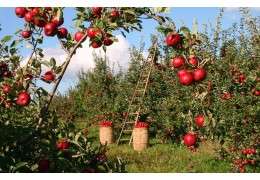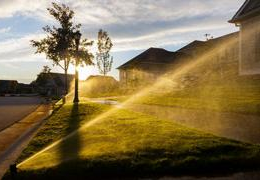How do you care for artificial grass?
If gardening isn't your thing, you might want to consider using artificial grass at home. In fact, it's a perfect option for those who don't have much time to care for natural grass.
Artificial grass has many advantages. In fact, it avoids certain problems that natural grass can cause. Who doesn't love walking barefoot on this type of grass? However, it's important to know how to do it. caring for artificial grass to prevent it from deteriorating.
If you want to buy artificial grass for your home, it's time to learn the best way to maintain it. Remember that the purpose of this material is to make it look as similar as possible to natural grass. Therefore, it's essential to keep in mind certain basic care guidelines regarding the type of artificial grass you have at home. If you want to learn more, keep reading.
Types of artificial grass
The first thing you need to identify before applying specific care is the type of artificial turf you want to install. Actually, The types of grass are classified based on their use or the material they are made from.. However, in any case, it is necessary caring for artificial grass regardless of what type it is.
When talking about the type of turf based on its composition, it's important to mention that there are two types on the market. The first requires silica sand, while the second doesn't.
Silica sand is a common filler that maintains firmness in any type of synthetic turf. It also makes the grass feel more spongy. It also acts as a thermal insulator. It's perfect for areas where sports such as soccer are played.
On the other hand, there is a type of artificial turf that doesn't require the use of silica sand. This turf consists of dense, curly grass. This type is mainly used for children's play areas.
Tips for caring for artificial grass
Now that you understand the types of grass in relation to their composition, it will be much easier to understand the care requirements in each case. Caring for artificial grass is not complicated at all.. In fact, it's precisely one of the reasons why people choose this alternative.
Artificial grass requires regular maintenance. This is especially true when used in sports areas. That is, when the grass receives heavy traffic or is exposed to the sun. Right now, we're sharing some tips for keeping your artificial grass in good condition.
Water with water
Due to the synthetic material of its composition, artificial grass often gets hot. Even more so in the summer. Therefore, it's necessary to water it. However, this process should be gentle. That is, avoid using large amounts of water, as this can cause stagnation.
Brush the grass
It is necessary to brush artificial grass once a week. This process is done against the grain. That is, the brushing is done in the opposite direction to the grain.
The goal is to evenly distribute the silica sand and rubber. This will keep the filler textured. This way, you won't have any problems with footprints. Brushing is done with a special brush. You can buy it at any home improvement store. caring for artificial grass.
Sweep and clean
In addition to brushing, be sure to clean the lawn monthly. It's necessary to remove any dirt that accumulates in the fibers. Some of these residues include dust and pet hair, among others. Also, remove flower and leaf debris so they don't damage the fibers.
You can clean with a neutral soap dissolved in water. Do not use detergents or substances such as chlorine.
Resets sand loading
With constant use and exposure to the environment, Sand accumulates in specific spaces on the lawn. If there are any gaps after brushing, you can replace them. It's essential that the grass remains soft, dense, and upright.
The amount of silica sand should be proportional throughout the lawn. If possible, always have a little sand in reserve for when needed.
Remove weeds
Under the artificial grass, sometimes weeds grow. Remove all of them to avoid damaging the lawn. Another option is to install weed control mesh. This prevents weed growth.
Apply fungicides
If the artificial grass is located in a humid area, apply fungicides. This type of grass is primarily planted in open areas, near pools, etc. Therefore, the best way to prevent fungal growth is with fungicides. Use hydrogen peroxide to eliminate any type of moss.
Other daily care for artificial grass
In addition to the tips for caring for artificial grass As mentioned above, there are certain daily precautions you need to keep in mind. If you have pets, clean their feces and urine from the lawn. It's recommended to remove them and then apply water and vinegar. It's also a good idea to combine mild soap with water.
On the other hand, don't drag heavy objects across the lawn. Also, don't place furniture on it for extended periods of time. This can cause irreversible marks. However, if you want to leave the furniture permanently installed, that's fine.
Also, if you have barbecues, be especially careful with falling fire or pieces of charcoal. These cause the grass to burn. However, there is no risk of fire with this type of material. Synthetic turf is manufactured to prevent fire from spreading.
Advantages and disadvantages of having artificial grass
Now that you know all the necessary care for your artificial grass, let's delve a little deeper into its pros and cons. Like any other type of decorative item, it has positive and negative aspects that you should take into account when purchasing one. Right now, we'll highlight the most important points in each case.
Advantages
-
Durability and resistance: Over time and in open spaces, they hold up quite well. They can be installed on almost any surface. The installation process is also very simple. It's also adaptable to all types of climates.
-
Promotes water savingArtificial turf requires inconsistent watering. Furthermore, the amount of water applied is minimal to prevent water buildup.
-
Easy maintenance: It doesn't depend on the use of fertilizers, compost, or herbicides. This is perhaps one of the most important advantages of having artificial grass instead of natural grass.
-
Environmentally friendly: does not pollute or cause emission of toxic gases.
-
Excellent finish: Its material allows it to look just like real grass. It's pleasing to the eye and looks good in any environment. In fact, it feels just like real grass to the touch. This type of grass is available in a single color or in a combination of several shades.
-
Resists UV rays: While this is not the case with 100% artificial grass, most include this extra benefit. It is an important benefit since they do not discolor when exposed to the sun.
-
Antiallergic: It does not have any elements that produce allergic reactions in humans or pets.
-
AffordableAnyone can have artificial grass at home. You don't need to spend a lot of money. Plus, it adapts to the needs of each space.
Disadvantages
-
Little feeling of naturalnessMost of us enjoy walking barefoot on grass. With artificial turf, that feeling is somewhat lost. After all, it's still plastic. Therefore, it's important to choose the best option carefully. There's a wide variety, and it's important to keep in mind that some manufacturers make them better than others.
-
They have no smellContinuing with the pursuit of a natural feel, artificial grass doesn't smell like fresh grass either. On the contrary, it tends to give off a plastic-like aroma. However, if you want to give it that natural touch, there are a variety of air fresheners on the market for this purpose.
How to buy good quality artificial grass
If you want to buy artificial grass, quality is important. First, compare costs and check out different offers. Beyond price, Make sure to purchase a lawn with a good finish and well-made material..
A good artificial turf should have a stable texture and good drainage. For everything else, focus on finding a turf that suits your needs. Choose the best option for your home, office, or outdoor space.
For example, turf comes in different thicknesses. You can find models from less than 20 mm, between 20 and 30 mm, and from 30 to 40 mm. The latter is used to decorate areas such as the garden. However, the first option is cheaper but is advisable when the turf is used as a carpet.
On the other hand, if you need artificial grass for a high traffic area, it is preferable buy a lawn with a height between 20 to 30 mm. In any case, the point you should be clear about is that if you want a more realistic finish, you need greater height in the fibers.





.jpg)






Leave a comment